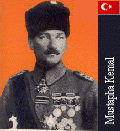
Pre-war military career: After having attended cadet school in St. Pölten and the military academy in Wiener Neustadt Böhm-Ermolli became lieutenant in 1875 (4th Dragoon Reg.) He passed the Kriegsschule (war academy), became a general staff officer and went up the ranks, mainly serving with cavalry units in Galicia. 1897 colonel, 1903 major general commanding the 16th cavalry brigade (Poszony, now Bratislava / Slovakia), 1905 commander of a cavalry division (Krakau, now Kraków / Poland), 1907 field marshal lieutnant. 18 11 1911 commander-in-chief 1st Army Corps (Krakau, now Kraków / Poland), 01 05 1912 general.
At the outbreak of war with Serbia Böhm-Ermolli became commander-in chief 2nd Army. At first his troops were sent against Serbia where some of his divisions - contrary to the initial planning - were involved in fierce fighting, but at the end of August 1914 the army was transferred to the southern flank of the Austrian front in Eastern Galicia. During the autumn of 1914, after an initial advance, the Austrian armies who had suffered casualties of forty to fifty percent were forced to retreat to the Carpathian Mountains and the Dunajec river. After reinforcements had arrived a second offensive operation, 2nd Army on the right flank, was attempted, but it failed again.
To protect Eastern Germany, especially Silesia, a very important industrial region, Böhm-Ermolli's army was sent to the north to co-operate with German troops, and the joint efforts were successful: the Russian "steamroller" was brought to a halt.
In February 1915, the 2nd Army had to return to the Carpathians to make a decisive offensive to relieve the long-besieged Austrian fortress of Przemysl, but all efforts failed and Przemysl fell into Russian hands on 22 March 1915. The 2nd Army, which had suffered huge losses in men and materials had to retreat to the initial lines, and when the Russian counter-offensive started, the frontline only could be held with Germain aid. After the breakthrough of Gorlice-Tarnów (2 May 1915) the Russian forces had to retreat and the armies of the Central Powers rapidly advanced eastwards, Böhm-Ermolli's 2nd Army protecting the right flank; 22 June 1915 Lemberg, the capital of Galicia (now Lwiw, Ukrainia), was regained by his troops. The advance of 2nd Army at last was halted by Russian resistance close to the banks of the Sereth river. More than half a year of positional warfare followed.
On 1 May 1916 Böhm-Ermolli was made colonel general, the second-highest rank in the Austro-Hungarian Army. On 4 June 1916 Russian troops commanded by General Brussilow launched an offensive against the Austrian 4th Army, and after a breakthrough had been achieved, forced them to retreat in a hurry. The neighbouring armies - including Böhm-Ermolli's which had been attacked too - had to retreat as well, but German-Austro countermeasures and Russian hesitation made the decisive defeat of the Central Powers on the Eastern Front impossible at that time. To co-ordinate counter-offensives the "Army Group Böhm-Ermolli" consisting of German and Austro-Hungarian divisions was established (4 October 1916), and Böhm-Ermolli was a successful commander again. After the Russian Revolution (March 1917) the Russian Supreme Command decided to start a strategic offensive operation with the aim to break up the Austrian front and to get Lemberg again. 31 Russian divisions attacked 11 divisions of Böhm-Ermolli's Army Group, but only could reach an initial success. With the Russians still attacking, the Central Powers already had made preparations for a counterattack which started on 19 July 1917 in Böhm-Ermolli's area of responsibility (Zloczów). The Russian troops were driven back and suffered heavy losses; it became clear that revolutionary Russia was at the end of the tether. The Austrian and German troops advanced to the old Austro-Russian border where the offensive came to an end. On 28 07 1917 Böhm-Ermolli was decorated with the commander's cross of the Militär-Maria-Theresien-Order, the second-highest Austrian military decoration.
After having been promoted field marshal (31 01 1918) Böhm-Ermolli's last service as a supreme commander was to lead the occupation of the Ukraine in March 1918. When this task had been ended successfully, the "Army Group Command Böhm-Ermolli" was dissolved at Odessa and Böhm-Ermolli was dismissed (17 06 1918).
Emperor Karl I. wanted him to visit the Italian front because - only for a short time - he planned to replace the chief of the Austro-Hungarian general staff, colonel general Arz v. Straussenburg (q.v.) by Böhm-Ermolli, but soon the emperor did not pursue the idea any more.
After the end of WWI, on 01 12 1918, Böhm-Ermolli was pensioned off by the new Austrian Republic.
Böhm-Ermolli is described as a very competent commander, a noble and restrained man. Conrad (q.v.) called him one of the most competent Austrian army commanders (besides Pflanzer, Boroevic and Dankl).
After the dissolution of the Habsburg monarchy Böhm-Ermolli moved to
Troppau. In 1940, the title and insignia of a German general field marshal of
the Wehrmacht were donated to him with the right to carry the old Austrian
marshal's baton. He died on 9 December 1941 in Troppau and - after a funeral
ceremony in Vienna, his body was buried in Troppau. His grave still
exists.
Literature:
Biographies of Böhm-Ermolli based upon large historical
research appear not to exist. Of course, there are many accounts about his military service as
one of nine Austrian field marshals in all both general and detailed
Austrian histories of WWI. Partly as a good source one may regard the book
Soldat im alten Österreich by Carl Freiherr von Bardolff (Jena 1938) who
had served as Böhm-Ermolli's chief of staff from October 1914 to January
1918.
© Mag. Florian Kotanko, A-5280 Braunau
FK